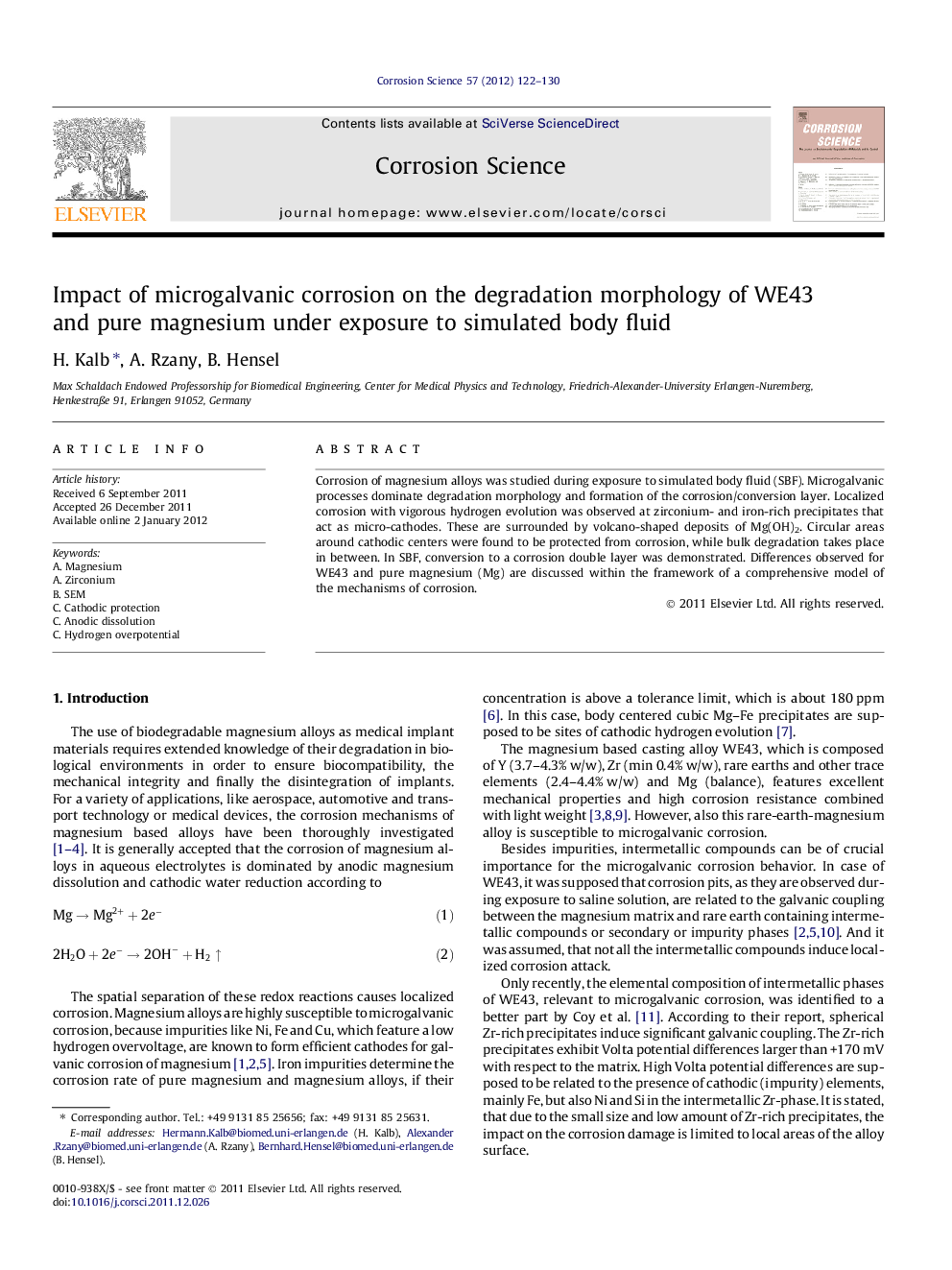| کد مقاله | کد نشریه | سال انتشار | مقاله انگلیسی | نسخه تمام متن |
|---|---|---|---|---|
| 1469627 | 1510038 | 2012 | 9 صفحه PDF | دانلود رایگان |

Corrosion of magnesium alloys was studied during exposure to simulated body fluid (SBF). Microgalvanic processes dominate degradation morphology and formation of the corrosion/conversion layer. Localized corrosion with vigorous hydrogen evolution was observed at zirconium- and iron-rich precipitates that act as micro-cathodes. These are surrounded by volcano-shaped deposits of Mg(OH)2. Circular areas around cathodic centers were found to be protected from corrosion, while bulk degradation takes place in between. In SBF, conversion to a corrosion double layer was demonstrated. Differences observed for WE43 and pure magnesium (Mg) are discussed within the framework of a comprehensive model of the mechanisms of corrosion.
► Localized Corrosion of WE43 and pure magnesium under static exposure to SBF.
► Vigorous hydrogen evolution at particles, which act as micro-cathodes.
► Zr at WE43 and Fe at pure magnesium are dominant micro-cathodes.
► Protection of surrounding bulk and volcano-shaped depositions.
► A comprehensive corrosion model including a corrosion double-layer is proposed.
Journal: Corrosion Science - Volume 57, April 2012, Pages 122–130